 It is customary not to like audiophiles on Habré. Seven years ago, I wrote an emotional post on the (then still separate resource) Geektimes
on this topic: expensive equipment and gold wires are not required to enjoy music. I still think so, but that old post has one peculiarity: I wrote it, already owning a decent assortment of exactly the same technique that I criticized. Despite the unobvious profit from such devices, they have always attracted me, and I was not shy about spending free money on them. Much time has passed since then, and at least three major changes have taken place in the ordinary, civilian environment. Firstly, streaming services have taken shape as a provider of almost any music anywhere in the world. Because of this, classic offline music players have all but disappeared. Thirdly, wireless headphones gained popularity, and the connector for ordinary, wired ones began to rapidly disappear from smartphones, breaking perhaps the most innocent and most useful legacy.
It is customary not to like audiophiles on Habré. Seven years ago, I wrote an emotional post on the (then still separate resource) Geektimes
on this topic: expensive equipment and gold wires are not required to enjoy music. I still think so, but that old post has one peculiarity: I wrote it, already owning a decent assortment of exactly the same technique that I criticized. Despite the unobvious profit from such devices, they have always attracted me, and I was not shy about spending free money on them. Much time has passed since then, and at least three major changes have taken place in the ordinary, civilian environment. Firstly, streaming services have taken shape as a provider of almost any music anywhere in the world. Because of this, classic offline music players have all but disappeared. Thirdly, wireless headphones gained popularity, and the connector for ordinary, wired ones began to rapidly disappear from smartphones, breaking perhaps the most innocent and most useful legacy.
I myself have changed over the years, and now I refrain from harsh unfounded judgments. I am tolerant of any hobby if it does not harm the addicted person or the people around him (especially those around him). I still love a variety of gadgets and value not only technology, but also experience- what are the ideal technical innovations "according to science" if they are not encouraging? But still, I prefer to have a rational point on the list of reasons for buying. Not only "because I want! 1", but is there any objective advantage in my new gadget? So, in this text I will try to offer the objective advantages of a modern expensive portable. But at the same time, I will act as an observer, try to determine where the dissatisfaction with early cassette and CD players began, which ultimately led to the true flourishing of audiophile technology today. And what were not only technical difficulties associated with this, but also, let's say, the social characteristics of this phenomenon.
For calibration, I will show my current portable set for home listening in any convenient corner, with the possibility of taking it to the country. This is my portable in its most advanced version:
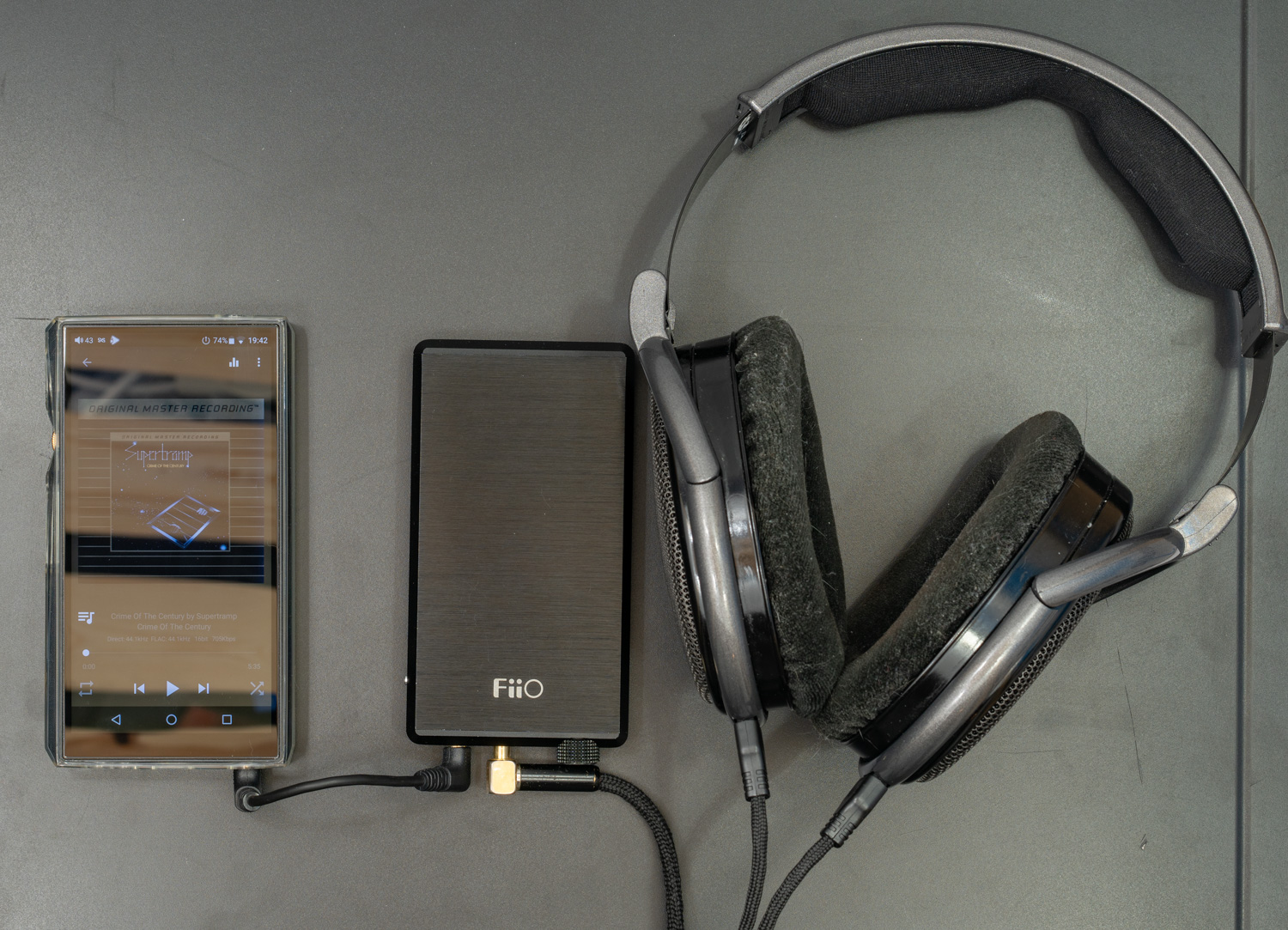
This is a Fiio M11 portable player, a Fiio E12 headphone amplifier and Sennheiser HD650 headphones with a custom homemade cable. And here is an alternative configuration of a "normal person":

And here are the Samsung Galaxy Note 10 smartphone and Sony WF-1000XM3 wireless "true wireless" headphones. This variation is more commonly used than an audiophile sandwich. The sandwich sounds better, mostly thanks to the headphones rather than the amp. But I do not take it with me on public transport, if only because open headphones transmit sound to my head as loudly as out. I don't want to be envied. But for a historical excursion, I select one more set from my retro stocks:

Sony WM-EX314 cassette player, almost identical to my first portable turntable from the nineties, and included headphones. When I got it, listening to music on the go was generally not very accepted, it was considered a bad habit of young people, like the social network Tiktok now. Music lovers of my parents' generation preferred a collective musical experience at home, with a reel-to-reel tape recorder or turntable, and larger speakers. Cassettes, especially on a cheap portable device, did not differ in sound quality, so I will make another upgrade:
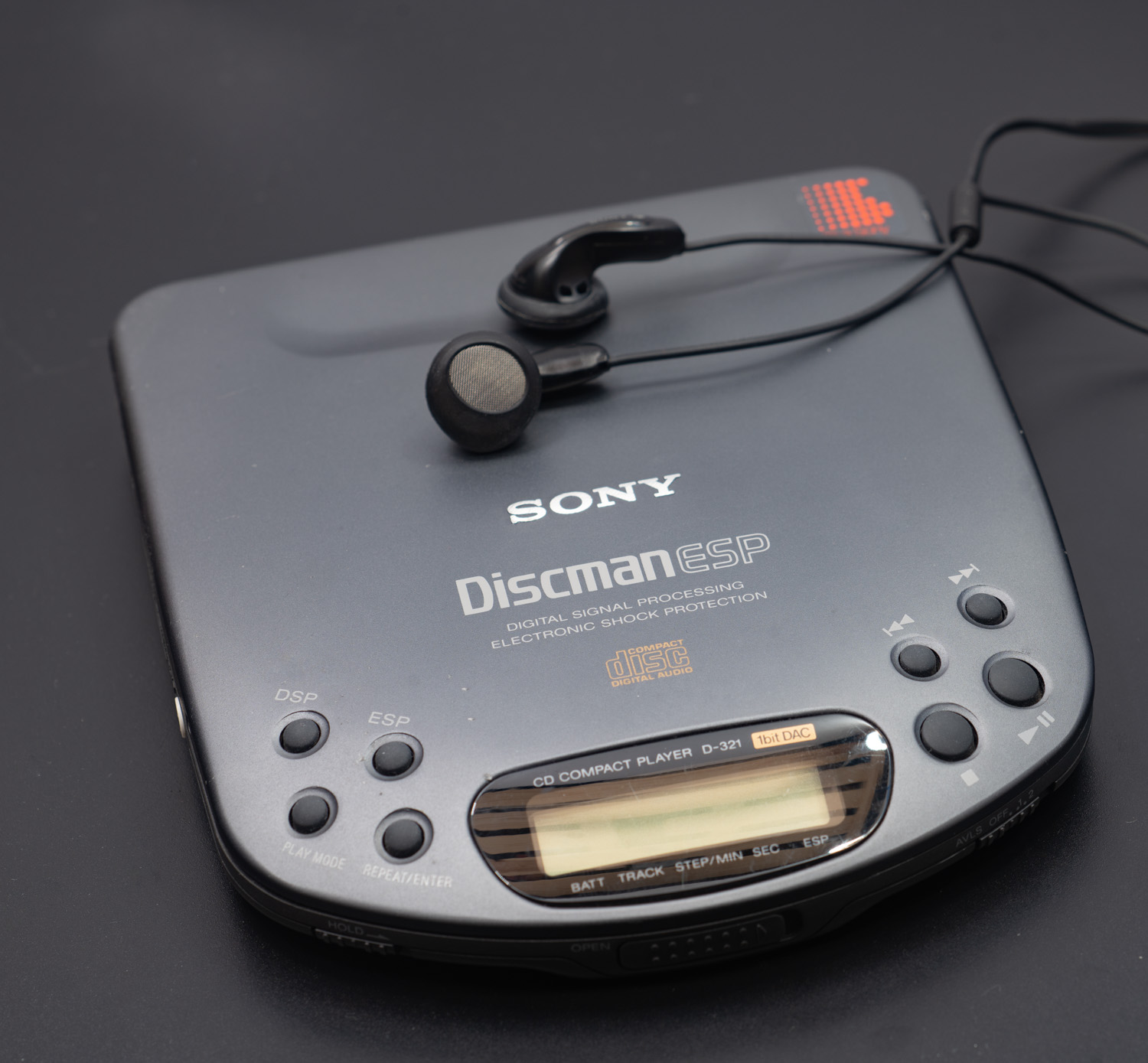
This is a 1992 Sony Discman D-321 portable CD player. The digital audio carrier will provide us with a significant increase in the objective characteristics of the audio signal. The headphones are still included. 25-30 years ago, the main quality criterion for a musical portable was its availability. If you have a player - congratulations, you are lucky, you can listen to Mumiy Troll and the Kino group at any time of the day or night, in any place that suits you.
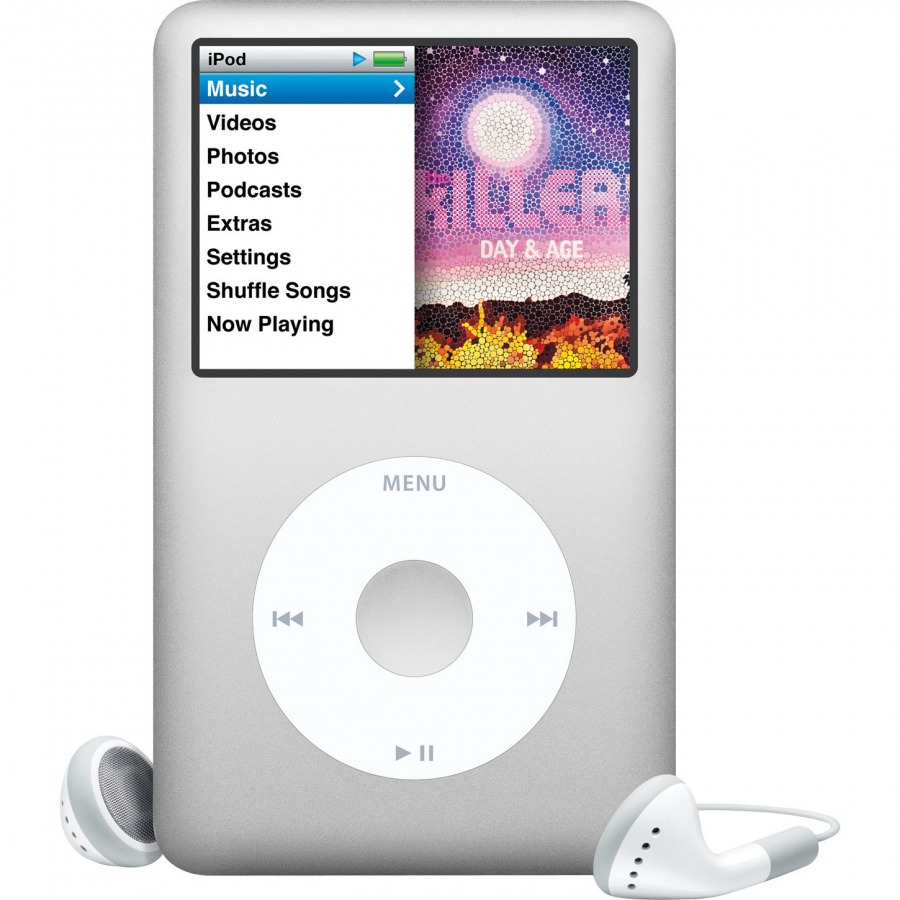
Let's rewind a little closer to the present, to the end of the 2000s. This is the iPod Classic in its latest version, with a 160 gigabyte hard drive. I listened to it, however, not with complete headphones, but with Sennheiser CX400 plugs. For this article, the important thing is not the ability to take the entire music library with you, but the use of incomplete headphones: the regular "drops" did not suit me anymore. Instead of what in English is called 'earbuds' - headphones that simply lie in the auricle and cover the ear canal - in-ear monitors have come into fashion, that is, headphones that are inserted directly into the ear. A tighter fit improves isolation from external noise and low-frequency sound transmission. This is where the evolution of personal audio equipment for mere mortals ends:even now we are dealing with a combination of some kind of player (usually a smartphone) with some kind of plugs (more and more often without wires). It is at the end of the 2000s that I first encounter an alternative reality discussing the benefits of non-standard playback media and unusual headphones. Let's start with the headphones:
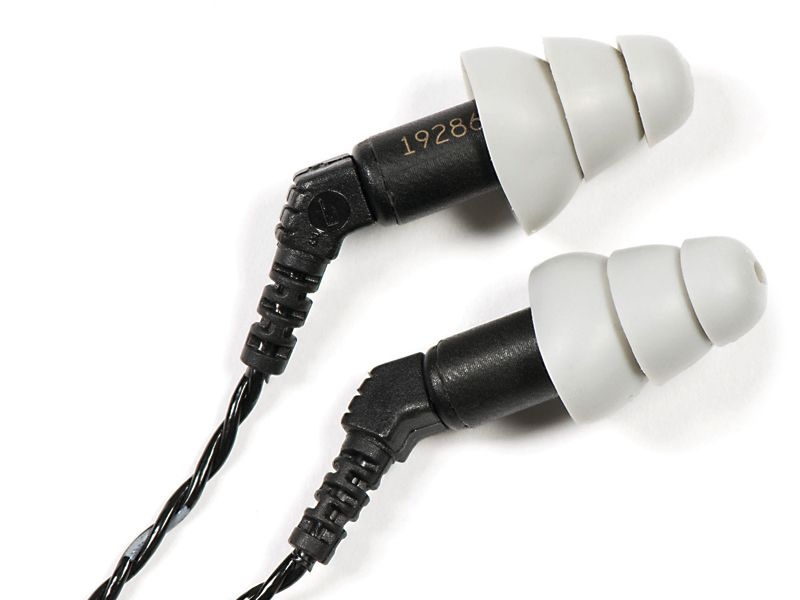
It's easier with headphones. Large on-ear headphones have been a tool for professionals for decades - sound engineers and sound engineers, DJs, and so on. At some point, more and more of them began to be sold to ordinary users. A wide range of in-ear monitors became available later, and among them the Etymotic ER4 model can be considered a real veteran. Equipped with an atypical (compared to most plugs) reinforcing radiator, it has been produced since 1991. An updated version of the ER4-SR and -XR is still available for about $ 350. The manufacturer is a company specializing in hearing aids, that is, these headphones also migrated to retail from the professional environment.
By the end of the 2000s, an interesting metamorphosis took place: although the technologies for making high-quality IEMs had already existed for more than one year at that time, most players still came with the cheapest earbuds. A new reality has emerged: you bought a player, buy some headphones, otherwise the money will be wasted, the sound will not be the same... Ordinary users were also drawn into this reality: cheap headphones quickly broke, contact in a frail cable was broken, or even worse happened. I had to buy other headphones, and at that time the assortment was already huge, for every taste and wallet. Someone chose headphones only in appearance, someone based on a reasonable budget for them, and someone collected information bit by bit on the forums, trying to find the very ideal, well, for example, the same Etymoti or high-quality Shure plugs or something else- then. Among those who always need something special, a culture of portable music loving has arisen.
How to discuss the advantages and disadvantages of certain headphones? How to convey in words how they sound? People, mostly amateurs, are starting to construct their own newspeak. As a result, the headphones are "bright" or "dark", they sometimes "mumble" or "sand". Once a specialist comes to the forum, after half an hour he runs away in horror, but pseudoscientific terms remain from him - "sibilants", "resonance" - but they are not always used correctly, and often at random. Say, is it wrong? Yes, but when you complain that your "Windows is buggy" or "the Internet lags", you also approximately describe some real problems, without going into technical details. I have a feeling that people within such a team understand each other perfectly, although it is difficult for an outsider to figure it out.Now, if the headphones are "dark" - is it good or bad?
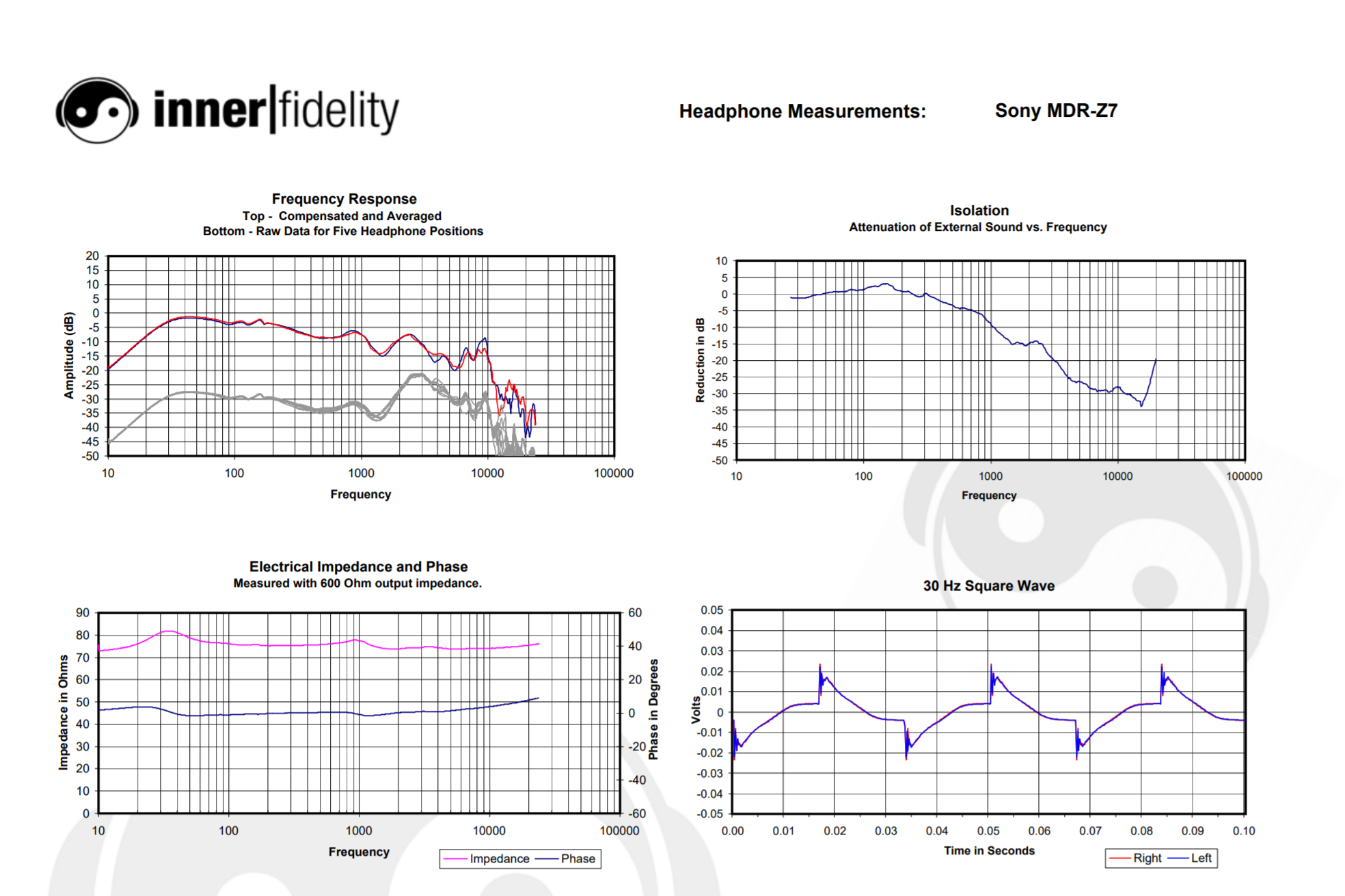
Naturally, there have always been methods for objectively measuring the parameters of headphones, they have constantly improved over time, and even today it cannot be said that this process is complete. You can compare some scientifically substantiated differences between some headphones from others. But look at an example of measurements from real headphones. If you are not in the subject, you will not be able to draw any conclusions right away. You need to dive into the rationale for these measurements, correctly understand what parameters are being evaluated, and how you can describe ideal headphones in the same graphs (but this is very difficult). Not everyone has the time and desire to plunge into this jungle, and do not mind someone explaining to them in simple words. Here, in any technology, a gap often arises between, so to speak, the public and specialists. The public is demanding simple truths.Experts are well aware that it will not work to reduce everything to one parameter (although there have been attempts). The technical part gets into the general discussion, but even there it gets distorted, sometimes beyond recognition. The simplest example of such distortion is comparing digital audio formats:
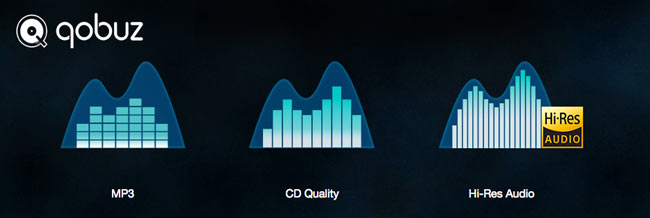
This is a picture from the site of the elite lossless streaming service Qobuz. Everything is simple and clear: if you listen to MP3, you have such sloppy bricks. Even the CD assumes some coarseness of detail. But in digital files with "high resolution" harmony and beauty. It is clear that there are no building blocks in MP3, the comparison between CD and Hi-Res is generally very unclear. The “ladder” characteristic of sound with a relatively low sampling rate can even be reproduced “scientifically” on an oscilloscope, but this does not mean at all that you will really hear the difference.
Okay, it's simple with headphones: in terms of objective parameters, they differ significantly from each other, even when we compare models of approximately the same design. But over time, requirements for audio signal sources begin to increase. The largest audiophile venue with a focus on portable, the Head-fi forum opens in 2001, and the first few years in the source thread is a routine discussion about functionality, just like any computer forum. The convenience of CD-players is assessed, the functionality of a CD is compared with a mini-disc. Then they are gradually forgotten, switching to iPods and other players without removable media. At the end of the 2000severything is changing: more and more often the theme of dissatisfaction flashes that the players available in any store "sound bad". For the reasons described above, these claims are rarely substantiated, and the evidence boils down to anecdotes like "turned on and was amazed, guys it's day and night, I didn't even know my <headphone model> could sound so good."
First in my memory was the popular idea of the advantages of "warm, tube" portable CD players over modern and soulless MP3 players. There were several explanations: for example, lossy compressed audio data, in principle, sounds worse than uncompressed audio. It immediately turned out that some diskmen, who advertise protection against crash when shaking for 120 seconds or more, compress data from a CD in a buffer. Such were anathematized, and priority was given to the most ancient specimens from the nineties, where there were simply not enough resources for such sacrilege. In addition, better sound processing was postulated: the conversion of digital data into an analog signal and its amplification. Then I even succumbed to this fashion and for some time, in addition to the iPod, I used the Sony D-777 CD-player.
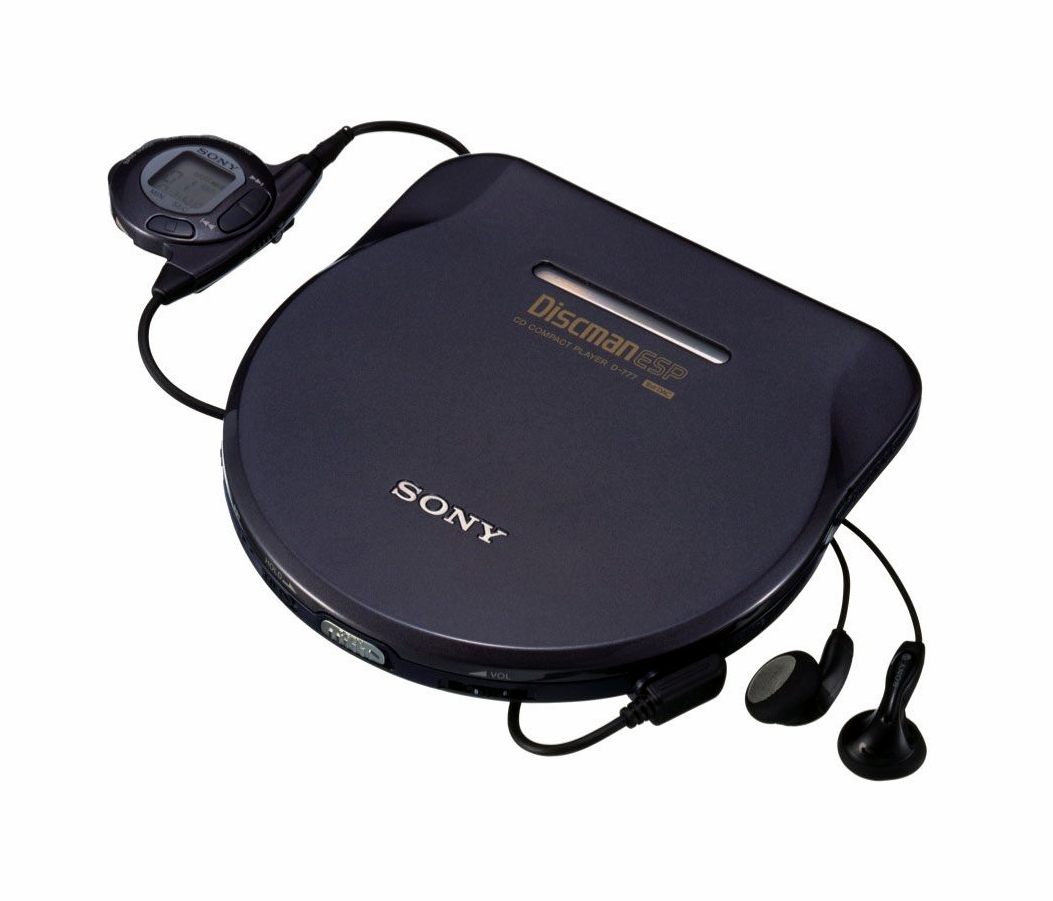
Roughly the same superficial arguments are made for the sound quality of vinyl, and even magnetic tape, now, during the renaissance of musical retro. But walking around with a bulky disk was still inconvenient, so they started looking for “good sounding” sources with a hard disk or flash memory. For example, the fifth generation iPod (known as iPod Video) in 2005 was considered better sounding than later versions because it used a supposedly better digital-to-analog converter. I myself experimented with loading music without lossy compression to the iPod - instead of MP3, I used Apple Lossless format and listened carefully, trying to notice the difference. And sometimes I even noticed! The demand for a slightly higher quality portable than everyone else has formed by itself.
DIY
Well, that is, not quite myself. For decades, the home hai-fi industry has been building in the minds of the consumer the idea that technology is cheaper and more expensive, with a worse or better sound. The problem was that this very industry slept through the emergence of similar expectations among the wearable enthusiasts. The home-builders were the first to react: at the turn of the “noughties” and “tenths”, the industry of modifications of factory products flourishes for the demanding tastes of a narrow group of people.

The picture above is taken from the page of one of the first modifications of such a plan - iMod by Red Wine Audio. They bought a stock Apple player of the 4th or 5th generation (but not later ones, since they "do not have a high-quality Wolfson DAC"), mainly the analog part of the circuit was modified - the capacitors were changed, a different operational amplifier was installed. Hereyou can see a similar modification from the inside, although in this case there is a strange collective farm with "thick" electrolytic capacitors outside the case. The result is a player that cannot be connected to headphones, but you can remove the signal directly from the line-out via an adapter and pass it on. There is no technical justification for the need for such alterations on the iMod website. There are only general words, for example:
- Collected, more articulated bass.
- Rich, seductive (!) Mid-range.
- Not flat, but wide stage.
- More dynamic sound.
Well, other "sweet highs" and "soft after-sounds". Another example of modification is the domestic development of Alexmod , where, we must pay tribute, the idea of improving the circuitry proposed by the manufacturer was brought to the absolute, and in addition to general considerations why it is necessary to do this, evidence was given in objective measurements. Cowon X5 players were used as a basis:
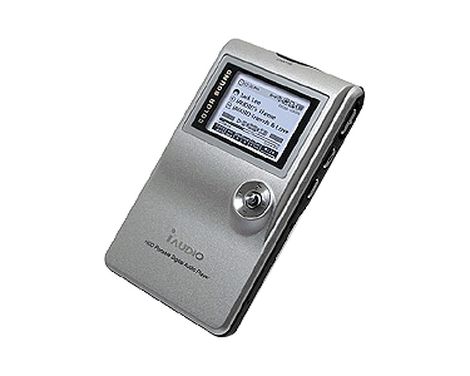
And iRiver iHP-120:
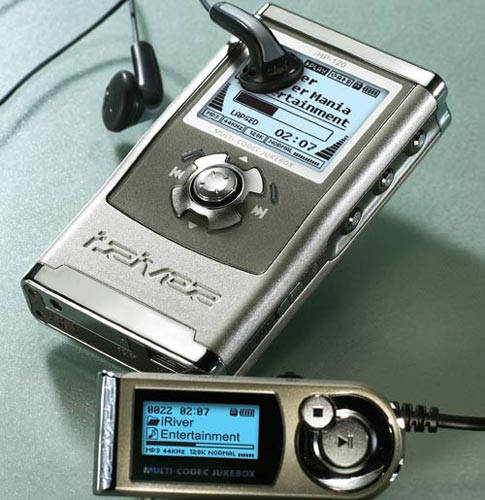
Both players used a hard disk for storing data, which changed to a Compact Flash card and freed up space for modified boards (at the same time added reliability). These things were not cheap: the players themselves for modifications "in the base" were quite expensive, and then there were high-quality components and manual work. I experimented with a cheap way to improve the sound: I connected an external sound amplifier to the line-out of the iPod, and then headphones to it. And I even heard the difference!
China rushes to the rescue
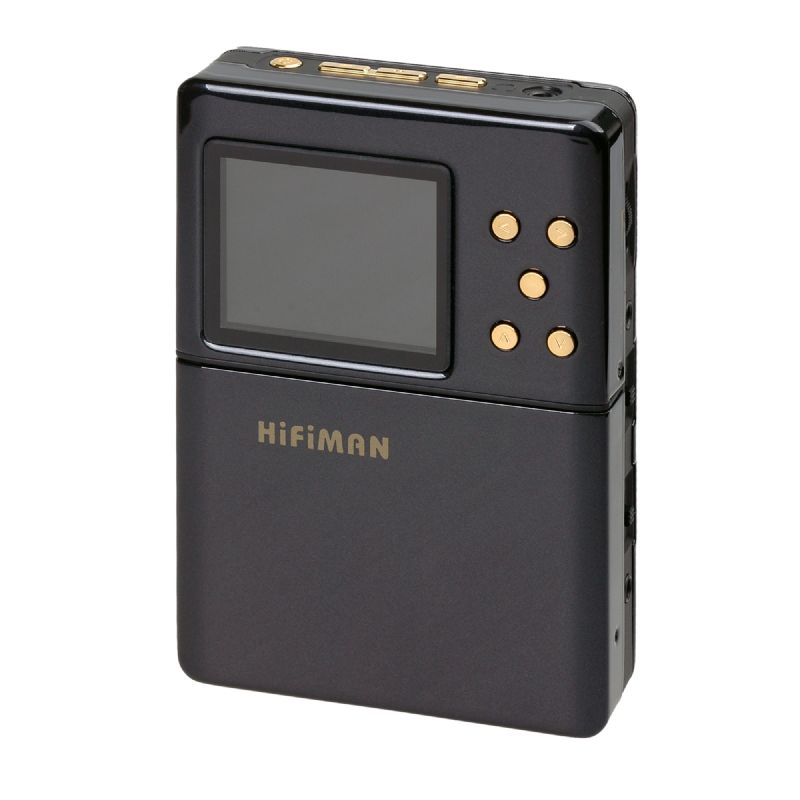
In 2010, the first "factory" players are released for those who want more from the portable. This is, for example, the Hifiman HM-801, a hefty brick the size of a cassette player. It cost $ 750, played music from an SDHC memory card, and lasted only 7-8 hours on battery power. But I had on board the DAC and amplifiers, which were previously found rather in desktop technology - hence the short operating time and serious heating. The interface and usability were far worse than those of iPods and other players for normal people. But - the ability to play audio files with high resolution.

Another example of a pretentious player is the Colorfly Colorful C4. There is even a claim to style, natural wood sides and a rich assortment of connectors. Both manufacturers are previously little-known, originally from China. It was they who reacted to the pent-up demand and for some time had almost no competitors.

I was sorry to spend so much money on a hobby, and in 2012 I bought the next Hifiman creation, the HM-601 model. It also had a dubious design and was surprisingly awkward to navigate. But the latter was solved by replacing the standard firmware with an open Rockbox , which also added support for large memory cards and support for all sound storage formats. It was a unique model even in its category. Like the HM-801, it used the so-called "multi-bit" DAC, similar ones used in ancient CD-players back in the eighties, and then abandoned them in favor of objectively better one-bit converters. Objective measurementsthe audio quality of the HM-601 was, to put it mildly, mediocre. What still allows me to listen to this player not without pleasure is the powerful headphone amplifier. Actually, I see this as the decisive difference between such devices from smartphones and simple players.

Until now, Chinese manufacturers are leading in the niche of high-quality portables: Hifiman, Fiio, Hidisz, Shanling, Cowon and others. While engineers at large multinational companies were trying to figure out why stuff thick capacitors into portable devices at all, China was meeting the demand. My last classic player, the Fiio X5 II, was purchased for features rather than sound. It supports most digital audio formats, from MP3 to DSD, and has two memory card slots onboard. Check out the progress in design in four years: this player no longer looks like a homemade product.

Over time, traditional manufacturers such as Sony came to this scene. Their products have excellent design, impressive price (in the photo - a device for three thousand dollars), excellent marketing, but I got the impression that in this context Sony is one of many, but far from the leader. Unlike Chinese manufacturers, this company does not understand the needs of the community, while developers from Fiio regularly post on thematic forums and collect feedback. The arrival of large vendors (Sony, Teac, Onkyo, Pioneer) to this market revealed another positive change: the audience requires the disclosure of technical characteristics, at least some justification for the high price. Sony traditionally offers to take their word for “silky reverberation” in their materials, but you don't have to go inside. And again,again shows the benefits of high definition audio in columns!

Another prominent player in the market is the Astell & Kern brand of iRiver, once known for its conventional players. Long before Sony, they pushed the price of portable hi-fi to the skies by being the first to offer devices for $ 2,000 or more. Their products have their own unique design, they were the first to introduce many technical solutions, but the objective parameters of their devices are not always ideal. The photo below shows the discontinued model AK380, cost - 3,500 dollars.
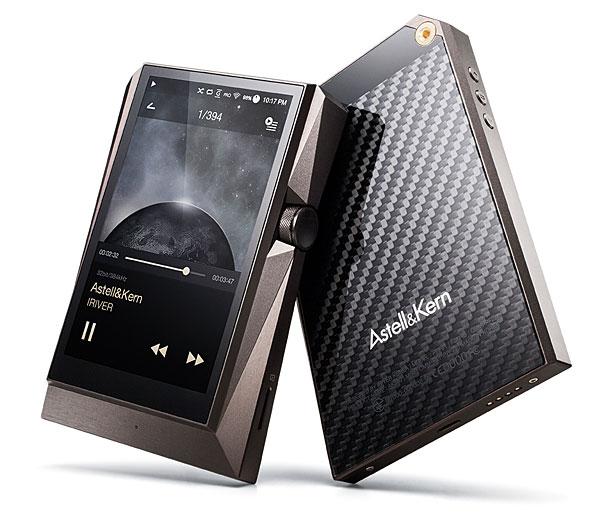
In any case, the niche of quality portability has turned into a traditional business: where not only the talent of the developer plays a role, but also distribution and marketing. The pioneers in this niche have convinced the audience that the player doesn't have to be cheap. Portable hi-fi has become something like jewelry - you don't judge them only by objective parameters, by the size and weight of precious stones, do you? But this is not the only analogy applicable here. Does a laptop with a desktop processor make sense? Yes, although not all of them will be bought. But those who for some reason need it (or want to) will be willing to pay for such an exclusive more expensive than usual, and will bring more profit to the manufacturer. But what if you put two processors? And also two video cards, and also modified desktop? If you admit the existence of such a technique,then a $ 2,000 player shouldn't be a problem either.
Actually, this is how these devices develop: at first they put one high-quality DAC in a portable player, which previously worked only with a large transformer from 220 volts. Okay, let's put two in the next model. Let's completely separate the audio path of the left and right channels. We implement processing of audio data with an insanely high sampling rate - up to 768 kilohertz. Let's increase the power of the amplifier, and again, and again. Why is this all you ask? Well, you might as well say that, with all due respect, you don't need a laptop with four desktop processors.
Suffering for Android
The audio part of portable players is developing in the directions indicated in the paragraph above. But the user interface was forced to change. Until 2016, all high-quality portable devices worked under the control of custom software, the set of features was determined by the manufacturer and almost did not change after it went on sale - software updates corrected errors. But with the development of streaming services, a request has arisen for a more complex solution - if I have a specialized device for playing audio, why am I listening to Spotify on my smartphone? A separate branch of portable audiophiles has emerged - external DACs and amplifiers for smartphones, for example, the monstrous Chord Hugo:
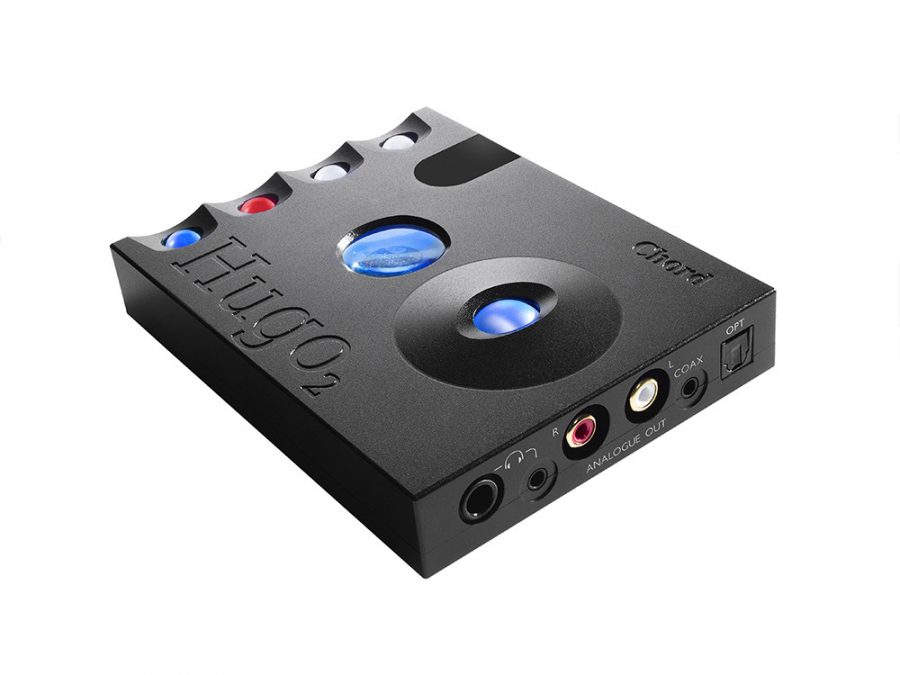
Both a specialized player and a regular smartphone can be connected to such devices. This is not entirely convenient: a sandwich made of two different pieces of iron has never been an elegant solution. The second option is a Bluetooth connection, but this is also a strange approach. Why build a garden with such a technique if the input is still a lossy compressed digital source? The emergence of specialized players with full-fledged Android on board became inevitable, and you can already install any application on them - even Spotify, even Tidal, even a client for your own music server. Why this brought a lot of problems, I will show on the example of the Fiio X5 III player, released in 2017.

In fact, this Chinese manufacturer needed to get the hardware platform of an ordinary smartphone, add a special audio path (where the magic happens!) And finish the firmware to fit your needs. The smartphone part dramatically raises the cost of the device. Energy consumption is growing. Certain software problems appear: standard Android systems do not understand what they are doing with the audio data from applications, but we need control and exclusive access with the output of music to the DAC unchanged. But the main thing: it is worth releasing any device based on Android of a certain version with a certain hardware, as it immediately becomes obsolete and starts to slow down. All these features have resulted in a very strange device. On the one hand, independently provedthe highest sound parameters, high output power. On the other hand, the Mediatek hardware platform outdated at the time of release with a quad-core processor, gigabyte of memory and Android 5. If you reset this player to factory settings, it works more or less quickly. It is worth registering in the Google Play store, the player starts to slow down terribly - the Google libraries are being updated, which no longer respect such a weak platform. My impression is that the main limitation is the amount of memory.
The modified kernel partly solves the problem. , which also makes it possible to overclock the processor (but it works on all copies). Without it, this player can be used strictly without Google services, and preferably without the Internet at all. With the modification of the firmware, you can even use applications like Youtube Music, if you get used to the lag of two seconds for any tap on the screen. The display itself with a resolution of 800x480 is also too small for a modern app interface. In general, it's a pain, although I managed to implement an offline player scenario on the X5 III with a large (two slots for microSD cards!) Storage and a PowerAMP player. I will add here barely audible, but noticeable on sensitive headphones, interference from wireless modules and the digital part of the player in general. In my smartphone I have the same, but here we are talking about an expensive device with an emphasis on sound!
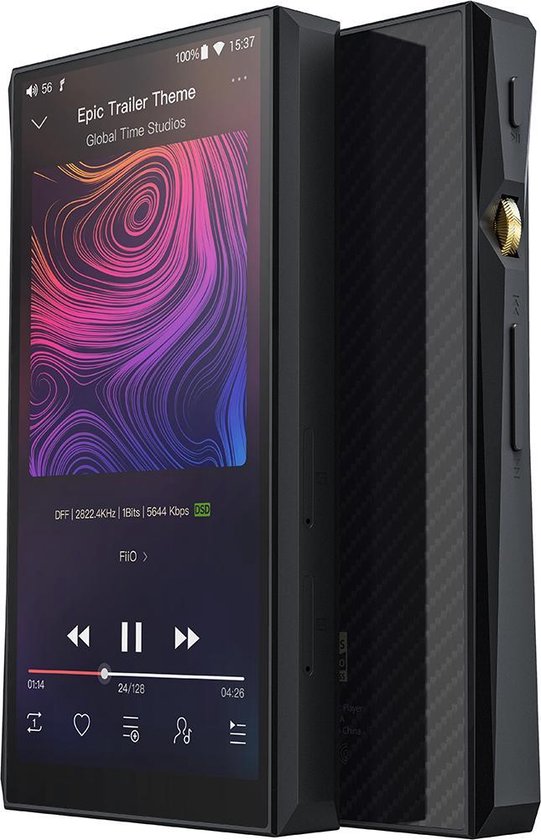
And here I go back to where I started: the Fiio M11 player, the further development of the X5 III - an Android device with a moderately outdated Samsung Exynos 7872 platform (six cores, a chipset for budget smartphones in 2018), three gigabytes of memory and Android 7.0. With a five-inch 720p display, this makes such a mediocre smartphone, but quite suitable for everything except games. But inside - a powerful audio path with two AK4493 DACs, a powerful headphone amplifier (up to 550 milliwatts into a 32 ohm balanced load), low noise and distortion. So far, this is where my portable audiophile sufferings ended: this unit offers a good balance of features, sound quality and cost ($ 500, but already withdrawn from sales). Unfortunately, the following models from this manufacturer, M11 Pro and M15, increase the price due to (theoretical) improvement of the audio path, which for me is not the only or even the main criterion.
The Fiio M11 is an example of a modern specialized audio player, currently the highest point of development in this niche. There are devices that are more expensive (sometimes much more expensive), but the differences between them and this model should be looked for with a magnifying glass. And now I will try to formulate what this unusual industry is, and why I personally need all this.
Rationalizing suffering
This is why I am interested in portable high-fi in general:
- This market grew out of the desires of users and was not imposed by the business. The business then hooked up, of course, but at first the request for portable audio “a little better than usual” came from the bottom.
- This market helped to develop small manufacturers (players - mainly in China, headphones - all over the world, including Russia), which were able to do what large manufacturers were too lazy to do.
- . - , . , , - — , , .
- , . , . , , .
Of course, the subjective approach sometimes takes extreme forms: these are players, the differences of which from telephone sound have not been proven at all, and special wires for headphones, and a whole format for presenting digital audio data MQA , which carries no advantages other than money for creators. This is the notorious CD-quality shaming, sufficient for the vast majority of applications. This is also a certain snobbery among many participants in the discussion, including regular bans on the Head-fi forum, when someone objectively, with facts, proves the sadness of another expensive product. In short, these are the features rather not of a specific branch of the national economy, but of human society in general.

I try to stay on the rational side, and here are the merits of my set of audio gadgets:
- - ( ) . , . : , , . Fiio M11 — . , . .
- , . , Sennheiser , .
- . , 96 /24 Direct Stream Digital - , , , .
- ( — MicroSD ) .
I would like to finish this generally subjective story with examples of some objective measurements of technology. With this, everything is quite complicated: few are engaged in measurements, not everyone does it on adequate equipment, even less often strict requirements for conditions are observed, which allow comparing different devices with each other. Even if all these issues are resolved, you need to be able to interpret the results, to correctly prioritize. The founder of the Audio Science Review forum consistently uploads measurements of technology, so I will give examples from there. Fiio M15
player (a very expensive upgrade of my M11): 120 decibel dynamic diazapon at 4V signal level, 64 milliwatts output power into 300 ohm load. Smartphone
LG G7 ThinQ : 113 decibel dynamic diazapon at 1V signal level, 14 milliwatt output power into 300 ohm load.
USB-C adapter for Hidisz S9 headphones : dynamic diazapon 117 decibels at a signal level of 4V, output power 52 milliwatts into a load of 300 ohms.

Here I make two important conclusions. Firstly, a specialized player has a definite advantage even in comparison with a good (in terms of sound) smartphone, at least in terms of the power of the headphone amplifier. Secondly, a good adapter for connecting to a smartphone (or computer) is almost in no way inferior to a specialized player. 10x smaller, 13x cheaper, and paired with the smartphone you already own. High-quality equipment does not have to be weighty or insanely expensive. But if you really want to, please, there is a choice. As is often the case, a small group of fans pushed the market as a whole in the right direction, and now even in smartphones the audio path is much better than 10 years ago. We have a huge selection of headphones and other accessories for portable music listening on the go.Previously, there was no such choice. This is definitely a positive result of what some would call "audiophilia of the brain."